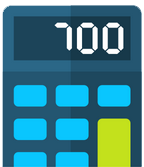Tax Relief On Tools Guide
Do you buy the tools that you need for work? Then you are likely to qualify for tax relief on that cost – regardless of what industry you work in.
Claiming back tax relief on your tools is a great way to pay less tax and can mean you are entitled to a tax rebate from previous years.
You can claim tax relief from HMRC for either the actual cost of qualifying tools and equipment or via a standard flat rate allowance.
Each method offers distinct advantages, and it’s crucial to select the most suitable approach to maximise your potential tax rebate.
You can backdate a claim which means if you haven’t claimed before, you could potentially receive a significant rebate covering multiple years of tool purchases.
The responsibility lies with you to recover your entitled funds, making it essential to initiate your claim at the earliest opportunity.
Our free ‘Tools Tax Relief Guide’ explains exactly what items qualify and the process for reclaiming tax relief on your tools.
What qualifies for tools tax relief?
The basic eligibility criteria are:
- Your purchases of equipment and tools are necessary to complete your work.
- You buy these tools at your own expense.
- Your employer does not pay you back for this outlay.
- You have paperwork evidence to support your claim (e.g. receipts).
What percentage of the overall cost can I expect to get back?
You can normally claim tools tax relief worth 18% of your tool purchases. A claim can be made for the previous four tax years.
If you’ve still got receipts for tools bought before then, these can be added to your claim.
How much you receive back as a rebate from HMRC also depends on the highest rate of tax you pay on your income.
For example, if you fall into the basic rate taxpayer category, you’ll be eligible for tax relief calculated at 20% of your qualifying expenses. If you’re a higher rate taxpayer, you can claim tax relief at 40%.
You can use our tool tax back calculator to get an estimation of what you may be owed back.
Tool tax relief time limit
A claim for a tool tax refund can be made for the last four tax years only.
Purchases made before the last four tax years can be brought forward but you’ll need to have the supporting evidence for each claim period and the items must still be in use.
Capital allowances can be claimed at a date of your choice but if it’s not claimed within the last four tax years you will lose the option to claim 100% of an assets value in the year it is bought.
As an example for the 2025/26 tax year, you can claim back to the 2021/22 tax year.
You need a good understanding of the capital allowance rulings before you claim to ensure it is accurate and you are not claiming too much or too little.
You can use our capital allowances guide to learn more.
What evidence do I need to make a tool claim?
HMRC expects you to provide receipt evidence with your initial P87 or online claim form.
A report from your tool provider can be accepted as long as the information HMRC needs is detailed including the date of purchase, description of purchase and the price paid.
For self assessment tax return claims receipts don’t need to be provided with your tax return but HMRC may ask for them at a later date.
How do I make a tool tax rebate claim?
To submit a claim to HMRC you will need to complete an online iForm, a P87 form or a self assessment tax return.
Online claims: HMRC’s online iForm is found here and you will need to login to your government gateway account to get started.
Postal claims: The P87 should be used for tool tax relief claims worth £2500 or below and you don’t already complete a tax return for a reason other than a tool claim (for example rental income).
HMRC will usually ask you to provide receipt evidence of your claim when you submit your P87. It’s recommended that you keep copies of receipts sent to HMRC through the post.
Self assessment: If your tool claim is valued at £2500 or more in any one tax year a self assessment tax return is typically needed.
A self assessment record will be opended by HMRC after a form SA1 has been completed so you can submit a tax return(s) including your tool expenses in the employment section of the return.
I don’t have receipts. Can I still claim?
If you don’t have receipts, you can still claim a tool allowance. Many industries have agreed different tool allowance amounts with HMRC.
For example a Mechanic can claim a tool allowance worth £120 per tax year. The time limit for claiming the tool allowance through your tax code is for the last four tax years only.
It might be worth asking your tool provider because they may be able to provide you with a transaction history and copies of any credit agreements which can be used as evidence.
What if my employer contributes to the cost of my tools?
If your employer contributes to the cost of your tools, you can only claim tax relief on the portion you paid yourself.
For example, if a tool costs £500 and your employer contributes £200, you can only claim relief on the £300 you paid. Make sure to keep clear records showing your personal contribution.
If your employer fully reimburses you for tools, either directly or through an allowance that covers the full cost, you cannot claim tax relief as you haven’t incurred any personal expense.
Will claiming tool tax relief affect my tax code?
If you make a successful claim for tool tax relief using the flat rate allowance method, HMRC may adjust your tax code to include this relief automatically for future years.
This means you’ll pay less tax each month rather than receiving a lump sum rebate. If your circumstances change (e.g., you change jobs or your employer starts providing tools), you should inform HMRC to ensure your tax code remains correct.
For capital allowance claims, you’ll typically receive a one-time rebate for past years and will need to submit new claims for future purchases.
Can I claim for other work expenses?
When submitting a claim for your tools, you have the opportunity to incorporate additional qualifying work-related expenses simultaneously.
It’s important to note that supporting documentation and evidence will be required for the majority of these claims.
Common allowable expenses include:
- Uniform or protective clothing washing and maintenance.
- Professional fees for example the Institute of Motor Industry (IMI).
- Mileage if you use your own car, van or motorbike to travel to temporary workplaces.
You can find out more about what else you might be entitled to through our tax guides which cover a range of topics that can be useful for PAYE employees.
Tool tax refund calculator
It doesn’t matter what your job is if you buy tools for work you can claim a tax rebate.
Just enter the total of how much you’ve spent on tools to get your tax rebate estimate.






